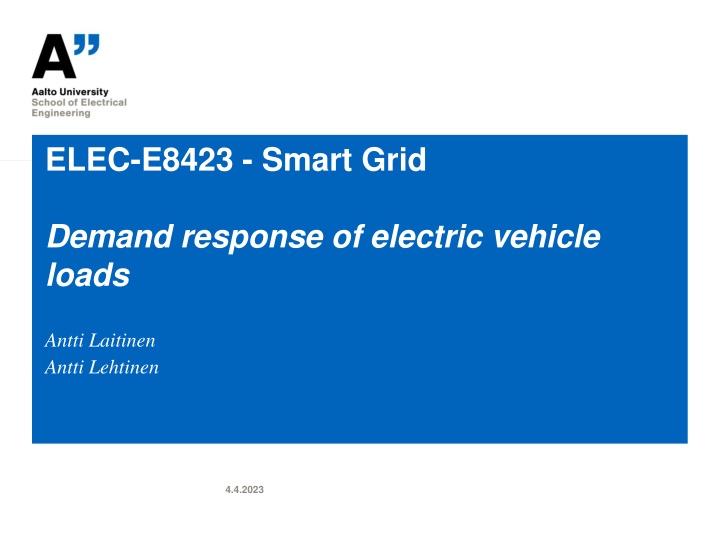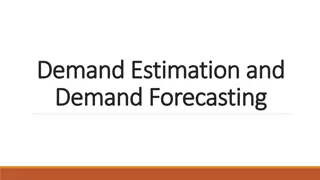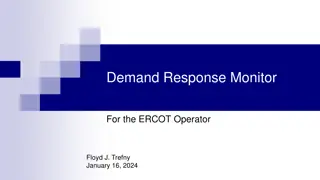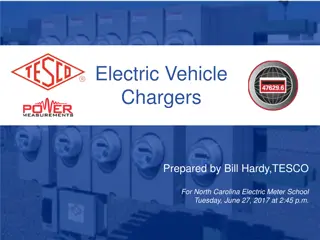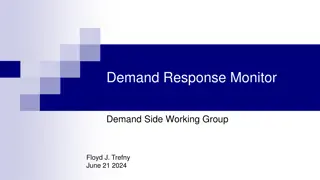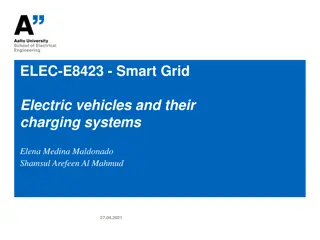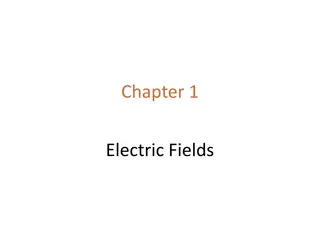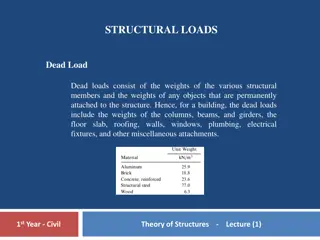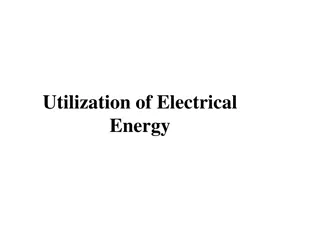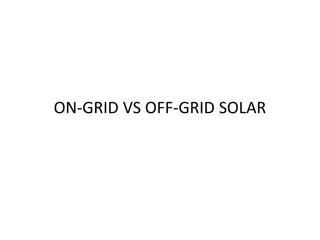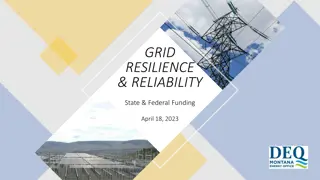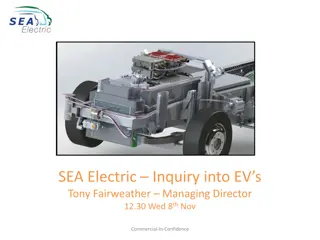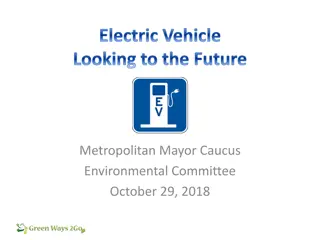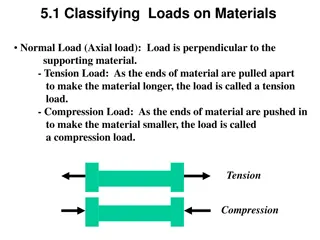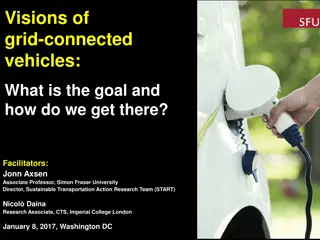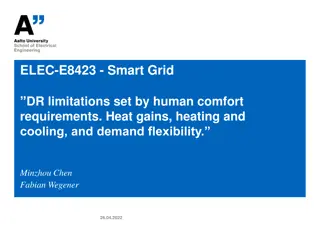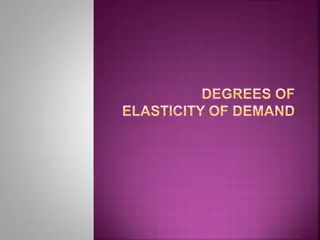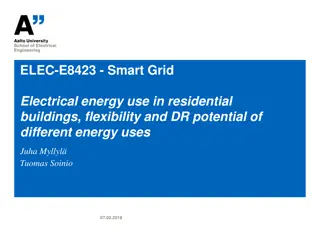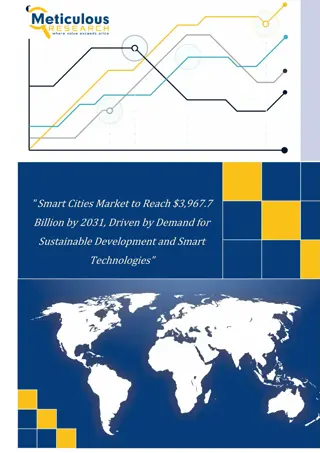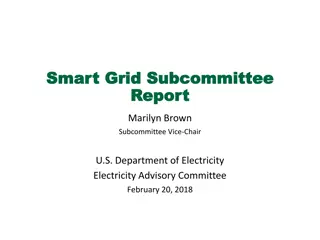Smart Grid Demand Response of Electric Vehicle Loads
Consumption management for power system equilibrium with electric vehicle charging, peak load reserve, and business model development. Overview of BEVs, PHEVs, V2G, and smart charging technologies.
Download Presentation

Please find below an Image/Link to download the presentation.
The content on the website is provided AS IS for your information and personal use only. It may not be sold, licensed, or shared on other websites without obtaining consent from the author.If you encounter any issues during the download, it is possible that the publisher has removed the file from their server.
You are allowed to download the files provided on this website for personal or commercial use, subject to the condition that they are used lawfully. All files are the property of their respective owners.
The content on the website is provided AS IS for your information and personal use only. It may not be sold, licensed, or shared on other websites without obtaining consent from the author.
E N D
Presentation Transcript
ELEC-E8423 - Smart Grid Demand response of electric vehicle loads Antti Laitinen Antti Lehtinen 4.4.2023
Introduction Demand response (DR) = consumption management to achieve equilibrium in power system Rapid growth in EVs will increase storage capacity connected to power system Potential to utilize as peak load reserve Utilization of DR on EV loads still in pre-mature stage in a large scale Large scale business model and customer incentives require development Figure 1: Illustration of Smart Grid Key terms: Battery Electric Vehicle (BEV), Plug-in Hybrid Vehicle (PHEV), Vehicle to Grid (V2G), Smart Charging 07.02.2018 Page 2
About BEV:s -(B)EV-fleet growing fast globally -Last year 38% of new cars were rechargeable in Finland -Typical EV has 50-80 kWh battery - Phev 8-20kWh -BEV = Battery Electric Vehicle -Typical consumption 20kWh / 100km Figure 2: Example of electricity demand curve. -Average driving distance per year is 18 000 km in Finland = <50 km/d -Typical charging speeds 1,8kW; 3,7kW and 11kW 07.02.2018 Page 3
BEV charging demand management Different alternatives of DR relevant for BEVs can be: Load shifting (shifting the time of use of an appliance) --> charge at night Peak clipping (reduced peak load) --> charge at lower power Valley filling (introducing new load in off peak periods, for example during the night). --> charge at night The recent shift towards real-time pricing in electricity contracts is driving the need for DR Figure 3: Distribution of electricity contracts in Finland by type. 07.02.2018 Page 4
BEV charging demand management Uncontrolledcharging charging starts at the time of arrival without any demand optimalization --> huge peak when people gets home after work Controlled charging charging is shifted to fixed times of low demand (night) with simple electricity tariffs or is optimized according to the grid or market conditions (smart charging) Graph 1 The graphs above show the simulated added load for scenarios where 1. there is no load management (BEV's are charged when people come home from work) 2. charging is relocated to fixed off-peak time 3. smart charging is used, and the charging period is flexibly controlled by the electricity market price 07.02.2018 Page 5
Benefits of EV demand response Smart charging or even very basic load management can greatly reduce impacts on load profiles. Demand response provides grid stability by reducing the stress on electricity distribution networks. DR enables better use of renewable energy sources and reduces the need to store energy in external storages, as cars can be charged at times of peak production --> reduces the need to turn electricity into hydrogen with poor efficiency Potential to lessen the need for further investment (capital and material) for additional infrastructure related to grid services (use of available hardware) Often it's a more flexible and customer-oriented way to charge EVs. 07.02.2018 Page 6
Example 1. BEV with 70kWh battery 2. 20% of the capacity is charged during the night with 7 cents/kWh cheaper electricity than during the day 3. Annual saving 358 Electricity price for today. Not the biggest variance Source: https://www.fortu m.fi/kotiasiakkaille/sahkoa -kotiin/opas/spot-hinta 07.02.2018 Page 7
Drawbacks and challenges of EV DR Individual charging times are stochastic, it is very difficult to forecast them Despite numerous smart charging projects, technology is still not in a state of the full commercial rollout. There is a lack of a uniform approach to aggregation and commercial deployment. There is a need for incentives or even regulations to promote the development of standardized smart charging technologies. Getting EV owners to follow along with the optimized charging schedules is not that simple. Contractual charging schedules between power companies and consumers might be a solution. Customers may feel that participating in DR could interfere with their full potential to use their vehicles when they need them. People with fixed price contracts might not feel the need to participate in DR 07.02.2018 Page 8
V2G = Vehicle to Grid Turns the population of electric vehicles into an array of distributed energy sources that can be tapped into during peak demand. Battery charging during low demand helps flatten the demand curve. The V2G systems still have a long way to go until widespread adoption. Figure 7: Flattening the demand response curve. 07.02.2018 Page 9
Conclusions 1. Demand response system for electric vehicles is necessary to allow further electrification of transportation 2. Smart charging and V2G technologies enable increasing the share of renewables of energy usage as well as provide support to the grid 3. Incentives and business models for customer participation in V2G require development 4. Demand response is already profitable for Finns if the price of the electricity is changing hourly 07.02.2018 Page 10
Source material used https://www.stat.fi/julkaisu/cl8e8f68pioun0cup61xxucow https://ieeexplore.ieee.org/abstract/document/8541926 Noel, Lance & Zarazua de Rubens, Gerardo & Kester, Johannes & Sovacool, Benjamin. (2018). Beyond Emissions and Economics: Rethinking the co-benefits of Electric Vehicles (EVs) and Vehicle-To-Grid (V2G). Transport Policy. 71. doi: 10.1016/j.tranpol.2018.08.004. Kester, Johannes & Noel, Lance & Zarazua de Rubens, Gerardo & Sovacool, Benjamin. (2018). Promoting Vehicle to Grid (V2G) in the Nordic Region: Expert advice on policy mechanisms for accelerated diffusion. Energy Policy. 116. doi: 10.1016/j.enpol.2018.02.024. Graph 1: K. Qian, C. Zhou, M. Allan and Y. Yuan, 2011. Modeling of Load Demand Due to EV Battery Charging in Distribution Systems. IEEE Transactions on Power Systems, vol. 26, no. 2, s. 802-810 ISSN 0885-8950. DOI 10.1109/TPWRS.2010.2057456. Figure 1: https://www.ampcontrol.io/post/how-to-implement-demand-response-programs-with-openadr Figure 2: https://lutpub.lut.fi/bitstream/handle/10024/163634/Diplomityo_Koivula_Niklas.pdf?sequence=1&isAllowed=y Figure 3: https://www.vertaaensin.fi/sahko/porssisahko Figure 7: https://www.amsterdamvehicle2grid.nl/ 07.02.2018 Page 11
